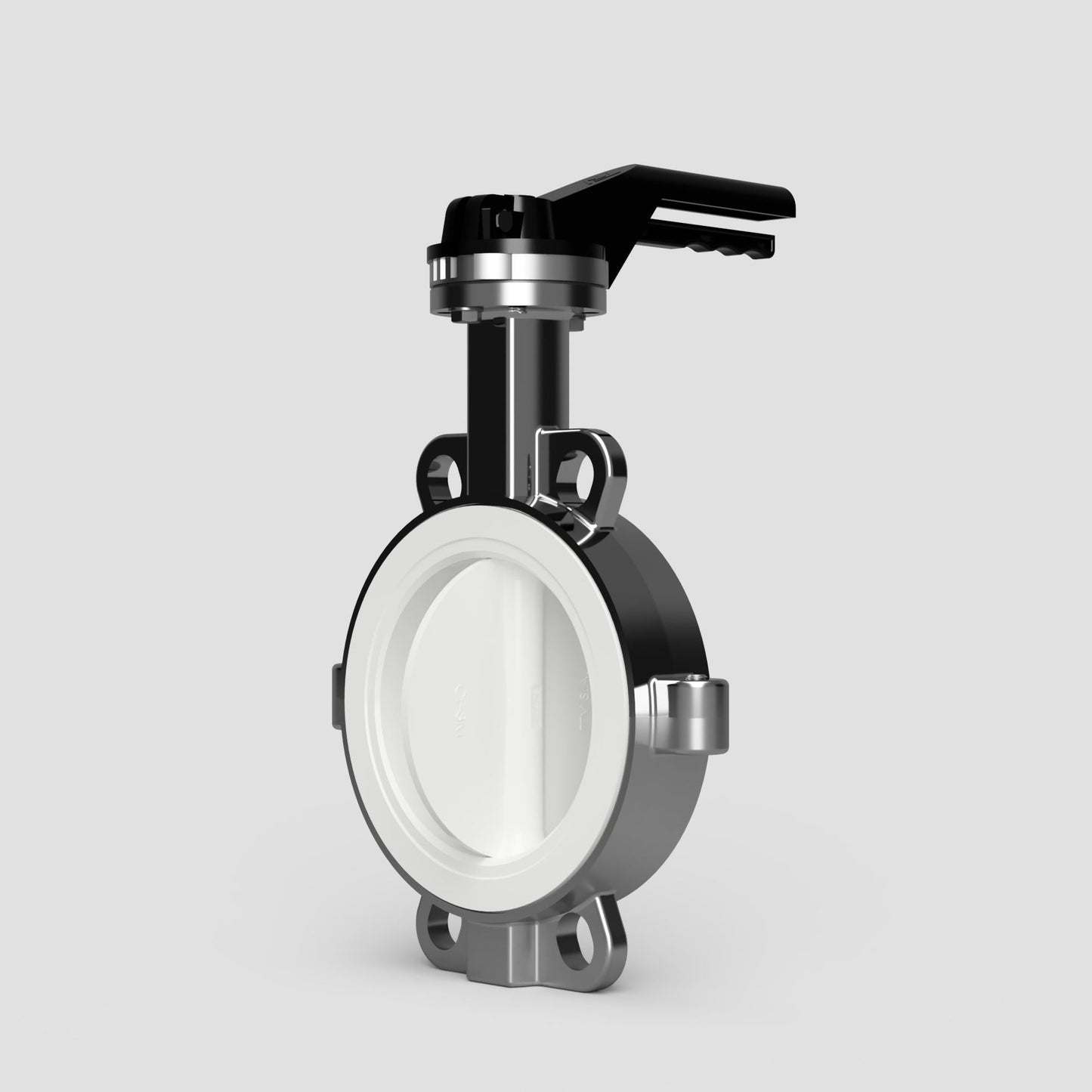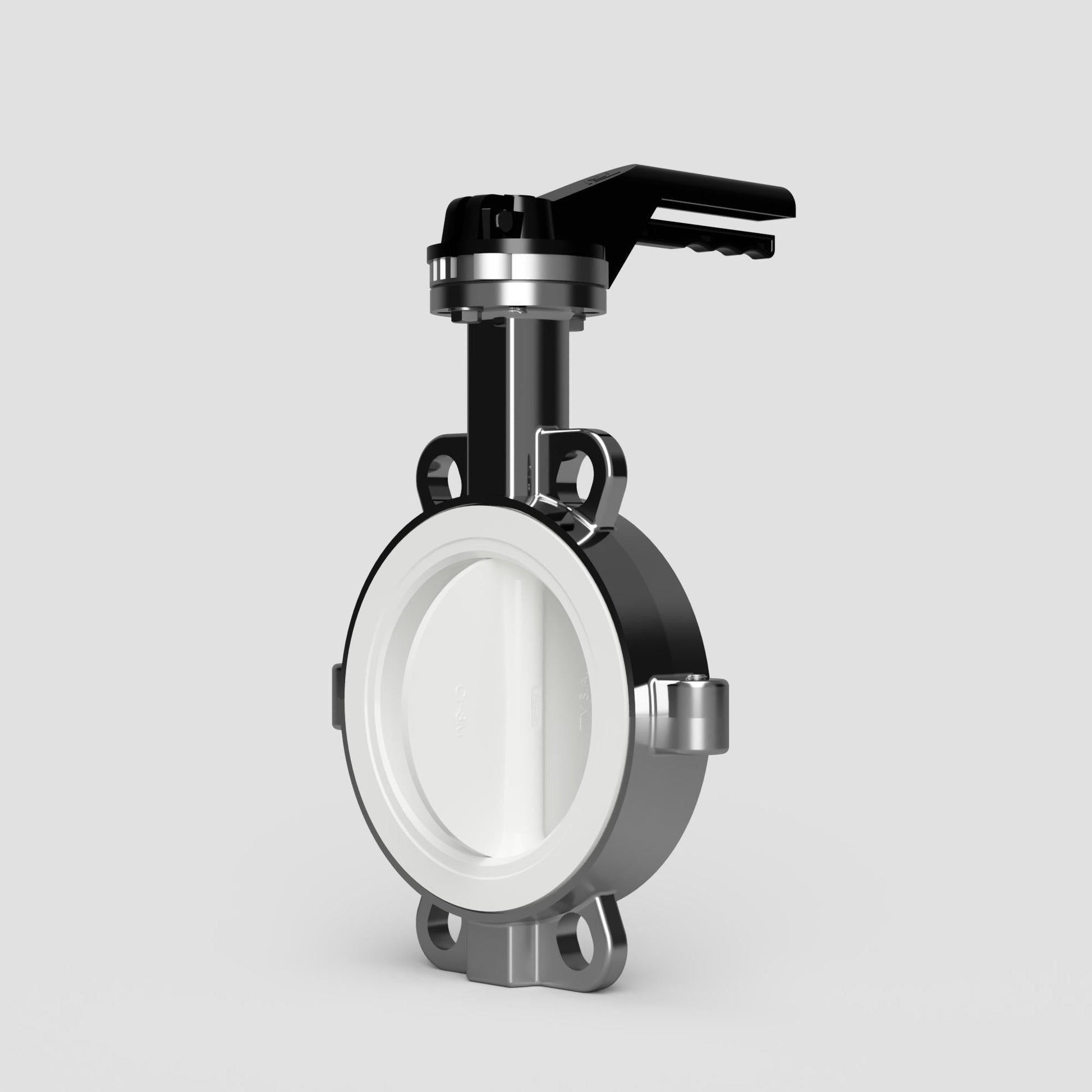Steam Valves
TTV PTFE Lined Wafer Butterfly Valve - Stainless Steel
TTV PTFE Lined Wafer Butterfly Valve - Stainless Steel
Couldn't load pickup availability
The TTV PTFE Lined Butterfly Valve in Stainless Steel is engineered to offer exceptional performance in the most demanding industrial environments. This high-quality valve combines the strength and corrosion resistance of stainless steel with the chemical inertness and low friction properties of PTFE (Polytetrafluoroethylene) lining, making it the ideal solution for controlling aggressive and corrosive fluids.
Key Features:
-
Corrosion-Resistant Stainless Steel Body:
- The valve body is constructed from premium-grade stainless steel, providing excellent resistance to corrosion and ensuring long-lasting durability even in harsh environments.
-
PTFE Lining for Chemical Resistance:
- The PTFE lining inside the valve offers superior resistance to a wide range of chemicals, ensuring compatibility with aggressive media such as acids, alkalis, solvents, and other corrosive substances.
-
Smooth, Reliable Operation:
- The PTFE lining also reduces friction, allowing for smoother operation and reducing wear on moving parts. This results in lower maintenance costs and a longer service life.
-
Leak-Proof Seal:
- Designed with precision-engineered sealing mechanisms, this butterfly valve ensures a tight, leak-proof seal, making it ideal for applications where fluid containment is critical.
-
Versatile Applications:
- Suitable for use in industries such as chemical processing, pharmaceuticals, food and beverage, water treatment, and more. The valve's versatility makes it a reliable choice for a variety of fluid control applications.
-
Compact and Lightweight Design:
- The butterfly valve’s design is both compact and lightweight, facilitating easy installation and operation in tight spaces without compromising on performance.
-
Available in Various Sizes:
- The TTV PTFE Lined Butterfly Valve is available in a range of sizes to accommodate different pipeline diameters and flow requirements.
-
ISO 5211 Mounting Pad:
- Equipped with an ISO 5211 mounting pad, the valve can be easily automated with various actuator types, enhancing its adaptability in automated systems.
Applications:
-
Chemical Processing:
- Handles corrosive chemicals with ease, ensuring safe and efficient fluid control in chemical plants.
-
Pharmaceuticals:
- Maintains the integrity of sensitive fluids and chemicals, meeting strict industry standards for cleanliness and safety.
-
Food and Beverage:
- Ensures hygienic fluid control in food processing applications, where contamination must be avoided.
-
Water Treatment:
- Provides reliable performance in the control of various water treatment chemicals, offering long-lasting operation in corrosive environments.
Why Choose the TTV PTFE Lined Butterfly Valve?
The TTV PTFE Lined Butterfly Valve - Stainless Steel is the perfect choice for industries requiring high performance, durability, and reliability in fluid control. Its combination of stainless steel construction and PTFE lining ensures that it can withstand the toughest conditions while maintaining efficient operation. With this valve, you get a solution that is not only built to last but also designed to provide superior control over your processes.
Share

FAQ's
What is the difference between a valve and an actuator?
What types of actuators are available?
The main types of actuators are:
Pneumatic actuators – use compressed air for fast, reliable operation.
Electric actuators – use electrical power for precise control.
Hydraulic actuators – use fluid pressure for high-torque applications.
Each type offers unique advantages depending on the environment, media, and system control needs.
How do I choose the right actuator for my valve?
To select the correct actuator, consider:
Valve type and torque requirement
Power source available (air, electric, or hydraulic)
Operating environment (temperature, humidity, hazardous area)
Control signal type (on/off or modulating)
Matching actuator torque and compatibility with the valve’s ISO mounting ensures reliable performance.
What are the main types of valves used in automation?
The most common valves in automated systems include:
Ball valves – for tight shutoff and quick operation.
Butterfly valves – for larger flow control with compact design.
Globe valves – for precise throttling and flow regulation.
Check valves – to prevent backflow.
Gate valves – for full bore flow isolation.
What’s the difference between a double-acting and spring-return actuator?
Double-acting actuators use air (or power) to both open and close the valve.
Spring-return actuators use air to open (or close) the valve, and a built-in spring to automatically return it to a safe position when power or air is lost — ideal for fail-safe operation.
How often should valves and actuators be serviced?
Regular maintenance intervals depend on operating conditions, but a good rule of thumb is to inspect every 6–12 months.
This includes checking for leaks, lubrication, seal wear, and actuator responsiveness to prevent unexpected downtime.

